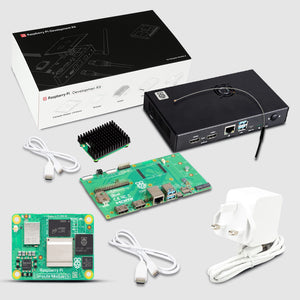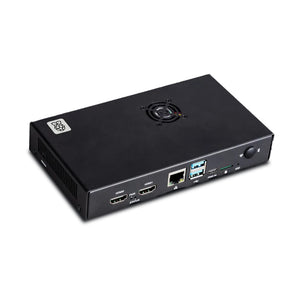The ESP32 WiFi Security Audit Demo project transforms a simple microcontroller board into a fully functional, portable wireless security auditing device, making it a fantastic educational tool for students, enthusiasts, and ethical hackers alike.

This project is based on the popular ESP32 board, a low-cost, high-performance microcontroller with built-in WiFi and Bluetooth capabilities. Using this compact board, the creator has built a lightweight system that allows users to perform a variety of WiFi security experiments—ranging from basic scanning to advanced vulnerability analysis and even phishing simulation via captive portals.

Whether you’re just beginning your cybersecurity journey or looking for a fun way to experiment with ethical hacking in a controlled environment, this project brings hands-on value using accessible hardware.
The ESP32 WiFi Security Audit Demo is a multi-functional, microcontroller-based tool that mimics various WiFi auditing techniques typically performed using bulky or expensive hardware. Its goal is educational—to help users understand how wireless networks operate, what makes them vulnerable, and how to recognize potential threats in a real-world scenario.
At its core, this project operates through three primary functional modules:
1. WiFi Network Scanner
The first module is a passive WiFi scanner that continuously scans nearby wireless networks. It collects useful data such as:
-
SSID (network name)
-
Signal strength
-
Encryption protocols (WPA/WPA2/WEP/Open)
- Channel number and frequency
This module allows the ESP32 to build a real-time list of all available wireless networks in the environment, providing a solid foundation for further analysis.
2. Vulnerability Analysis Engine
After collecting the data from nearby networks, the tool’s second module performs a basic vulnerability analysis. It flags open networks and identifies those using weak or outdated encryption protocols, which are more susceptible to attacks like eavesdropping or spoofing.
This helps users visualize real-world examples of insecure networks and understand what makes a WiFi setup vulnerable.
3. Captive Portal Demonstration
Perhaps the most interactive part of the project, the captive portal demo simulates how rogue access points are used in phishing attacks. The ESP32 sets up its own fake WiFi hotspot, and when users connect, they are automatically redirected to a phishing-style login page.
This demonstration shows how attackers can easily trick users into revealing sensitive information if they connect to an untrusted network—an important lesson in WiFi hygiene and digital security.
-
Real-Time WiFi Scanning – Displays a list of active networks with detailed metrics.
-
Vulnerability Warnings – Highlights insecure or suspicious networks.
-
Captive Portal Simulator – Mimics phishing-style attacks for educational purposes.
-
Local & Cloud Storage – Optionally logs results locally or syncs with Google Sheets.
-
Interactive Control – Commands can be issued via the serial monitor for testing.
-
Credential Capture Visualization – Simulated login pages show how data could be intercepted.
-
Highly Customizable – Modify or extend features using open-source code.
-
PlatformIO + VS Code Compatible – Built with modern development tools for easy iteration.
The ESP32 microcontroller, developed by Espressif Systems, is widely used in the maker community due to its power, versatility, and affordability. It offers dual-core processing, integrated WiFi/Bluetooth, and plenty of GPIOs, making it perfect for projects that require connectivity and computing power in a compact form factor.
Available on our store [insert product link], the ESP32 is ideal for a wide variety of applications, from IoT systems to automation, home control, wearables, and now — ethical hacking simulations.
You can also check out other ESP32-based boards and accessories available in our catalog to further expand the capabilities of your projects.
This project is an ideal hands-on learning experience for:
-
Students studying cybersecurity or computer networks
-
Educators teaching network safety and ethical hacking
-
Makers interested in security and hardware-based learning
-
Penetration testers needing a simple, mobile testing tool
By visualizing the attack surface of WiFi networks and showing how users can fall victim to rogue access points, the ESP32 WiFi Security Audit Demo promotes a better understanding of online safety.
It also opens up discussions about best practices in wireless security, such as:
-
Avoiding open networks
-
Using WPA2/WPA3 encryption
-
Being cautious of unfamiliar WiFi hotspots
-
Recognizing suspicious login pages
It’s important to clarify that this project is intended strictly for educational and ethical purposes. All testing should be done on your own networks or with explicit permission. Unauthorized scanning or spoofing of networks may violate laws or terms of service in some jurisdictions.
This tool is designed to teach, not exploit. It raises awareness of how common wireless attacks work and reinforces good practices for avoiding them.
You can customize the captive portal page, change the scan frequency, and tweak the user interface to your preference using the open-source code.
The ESP32 WiFi Security Audit Demo is a brilliant showcase of what can be achieved with low-cost hardware and a bit of creativity. It bridges the gap between theoretical knowledge and hands-on exploration in the field of wireless security. Whether you’re a student, teacher, or tinkerer, this project will spark your curiosity and build your practical skills.
We’re excited to highlight this type of innovation in our community. You can explore ESP32 boards and accessories on our website to start your own version of this project today.
🔗 Original Project Source: ESP32 WiFi Security Audit Demo by Bruno Félix on Hackster.io








